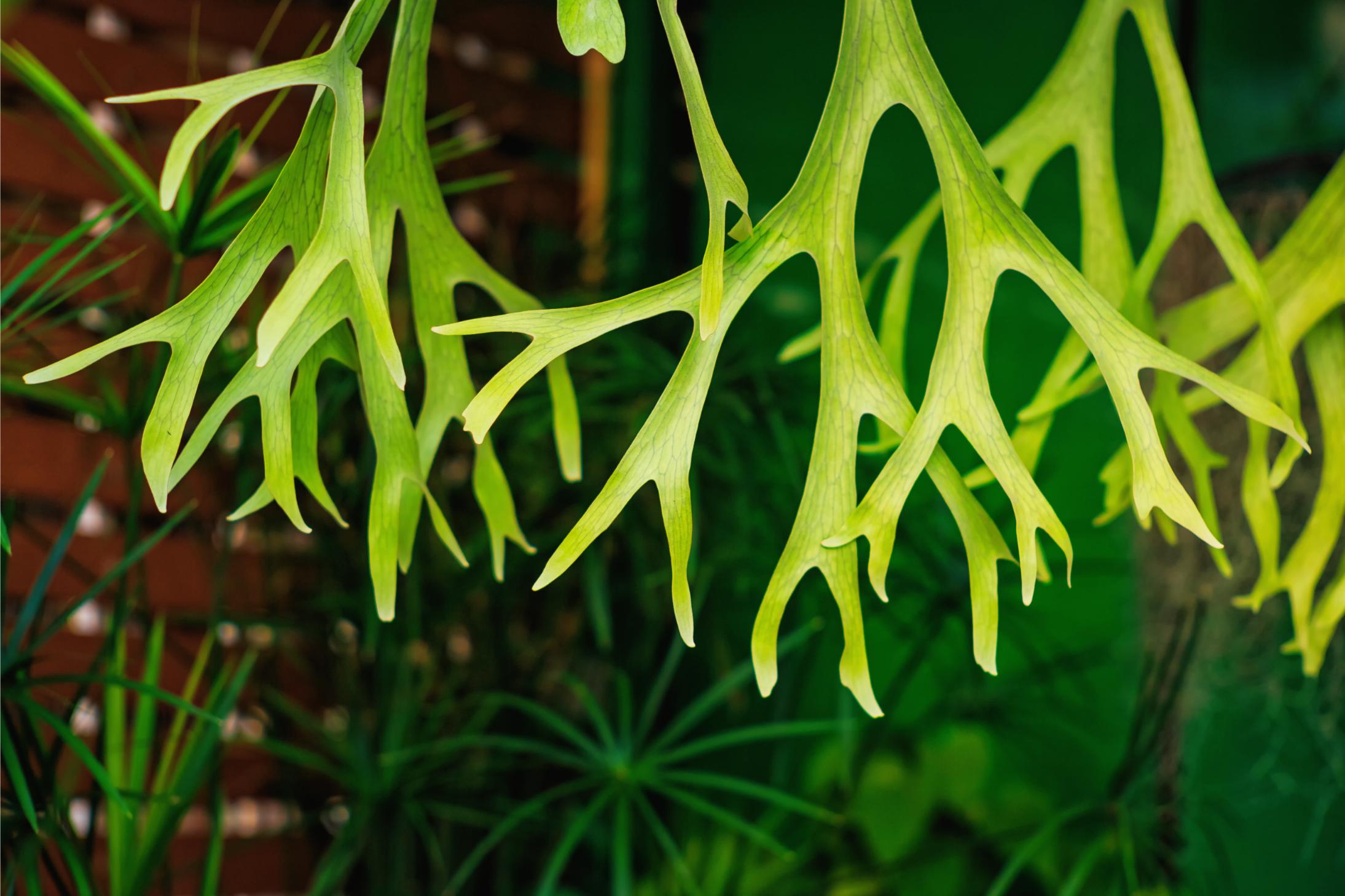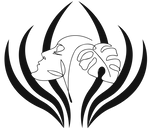
Platycerium is a genus of epiphytic ferns in the family Polypodiaceae. These ferns are commonly known as staghorn ferns due to the shape of their fronds, which resemble the antlers of a stag or deer. Platyceriums are native to tropical and subtropical regions of the world, including parts of Africa, Southeast Asia, Australia, and Central and South America.
Here’s a breakdown of key points about Platycerium (staghorn ferns):
-
Physical description
- Fronds: Platyceriums have two distinct types of fronds:
- Sterile fronds: These are the large, flat fronds that often resemble the shape of deer antlers. These fronds help the plant collect moisture and nutrients, and they can be quite large.
- Fertile fronds: These are smaller and less conspicuous. They are produced for reproduction and usually grow from the center of the plant.
- Growth Habit: They are epiphytic, meaning they grow on trees or rocks without being parasitic (in nature). They can be found in rainforests or other humid environments, where they attach to tree trunks or branches using their roots.
- Size: Depending on the species and growing conditions, staghorn ferns can vary greatly in size. Some species can grow as large as almost 1 meter in diameter, while others are smaller and more compact.
-
Types of Platycerium
Here are the platycerium species (source http://www.halling.com/platyceriums)
- Platycerium alcicorne
- Platycerium andinum
- Platycerium bifurcatum
- Platycerium coronarium
- Platycerium elephantotis
- Platycerium ellisii
- Platycerium grande
- Platycerium hillii
- Platycerium holttumii
- Platycerium madagascariense
- Platycerium quadridichotomum
- Platycerium ridleyi
- Platycerium stemaria
- Platycerium stemaria 'Laurentii'
- Platycerium superbum
- Platycerium veitchii
- Platycerium wandae
- Platycerium wallichii
- Platycerium willinckii
Than exist many hybrids:
- Platycerium veitchii x bifurcatum white
- Platycerium veitchii x willinckii
- Platycerium elephantotis x alcicorne
- Platycerium veitchii x bifurcatum 'White & Shine'
- Platycerium wandae x veitchii
Welovetropicalplants offer these RARE species of platycerium:
- Platycerium willinckii 'Bacteria'
- Platycerium willincki 'Celso'
- Platycerium willinckii 'OMG'
- Platycerium willinckii 'Jade girl'
- Platycerium SS Fong
- Platycerium bifurcatum white
- Platycerium ridley var. Coral
- Platycerium omo polar bear
Here you will find our wide and complete assortment of platycerium.
-
Growing conditions
- Light: Platyceriums thrive in bright, indirect light. While they do well in a shaded forest understory in their native habitats, they need sufficient light to grow well in cultivation. However, direct sunlight can scorch their fronds.
- Temperature & Humidity: They prefer warm temperatures and high humidity, making them ideal for tropical or subtropical climates. They can be grown indoors in temperate regions, but humidity levels need to be maintained. A humidity level of around 50% or higher is ideal.
- Watering: These ferns like to be kept moist, but not waterlogged. The roots should never sit in water. Watering should be done regularly, but it's important to let the plant dry out between waterings to avoid root rot.
-
Mounting & Potting
- Mounting: Platyceriums are commonly mounted on pieces of wood, tree fern plaques, or hanging baskets in cultivation. Mounting allows them to grow naturally as epiphytes, with their roots free to cling to the surface and absorb moisture from the air.
- Potting: If growing in a pot, a well-draining potting mix is essential. A mix designed for orchids or other epiphytic plants works well, providing aeration and drainage.
-
Care Tips
- Watering: Water the fern thoroughly when the soil is dry to the touch, but avoid waterlogging the roots.
- Fertilizing: Fertilize Platyceriums every few weeks during the growing season (spring and summer) with a diluted liquid fertilizer. Avoid over-fertilizing, as this can burn the roots and fronds.
- Cleaning: Occasionally wipe the fronds with a damp cloth to remove dust or debris, as this helps the plant to better absorb moisture from the air.
.jpg)
.jpg)
.jpg)
.jpg)
.jpg)
.jpg)
.jpg)
.jpg)
.jpg)
.jpg)
.jpg)



